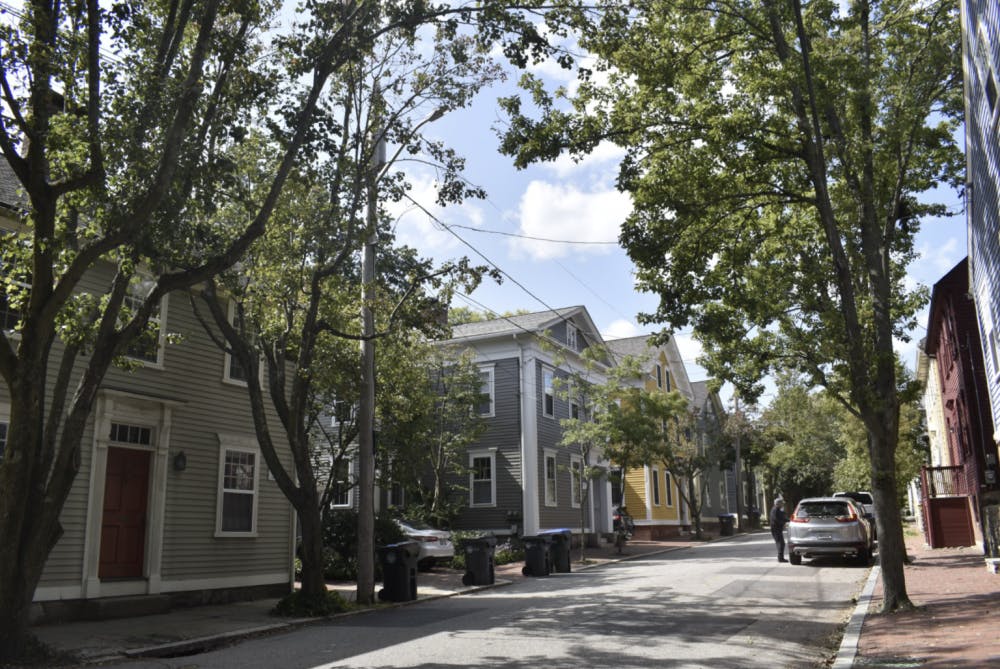A new draft of the City of Providence’s long-term affordable housing plan, released December 2020, added more detail and incorporated community input, according to the coordinators of the project. Those familiar with the plan, the initial draft of which was released in August, said its impact on the East Side is still uncertain.
“The need for safe, secure, affordable housing has never been more clear or more urgent as it is right now,” said Martina Haggerty, director of special projects at the City’s Department of Planning and Development, in a Jan.14 virtual public information session.
The event, hosted by the Department of Planning and Development, provided an overview of a draft of the City’s extensive Anti-Displacement and Comprehensive Housing Strategy report. The strategy report contains a 10-year plan with the goal of creating “a blueprint for housing production” for residents, nonprofit organizations and other community members, Haggerty said. The plan will “function as a unified vision that we can all work towards together.”
The plan’s recommendations are broken down into categories and organized by priority, cost and impact, said Jessica Pflaumer, the principal planner of the project, at the information session. The goal is to create an action plan with a focus on low cost and high impact and priority.
Some of the plan’s policy recommendations include “increasing the density of housing units that are allowed,” activating non-conforming lots for development and streamlining the application process for affordable developments, Pflaumer said.
The city’s first draft of the report outlined preliminary recommendations, The Herald previously reported. The city began creating the plan in collaboration with RKG Associates, an economic, planning and real estate consulting firm, over a year ago.
In response to the December draft, which Hypolite wrote recommends that the City “consider upzoning some residential areas where appropriate, after careful study and community engagement,” the College Hill Neighborhood Association stated that “rezoning (College Hill neighborhoods) to R-4 would open the floodgates to student housing developers … The ‘dormification’ of College Hill would also bring with it the problems attendant on this business model, including noise and poor maintenance of historic properties.
The CHNA declined to comment further on its statement.
The updated draft, however, “does not recommend rezoning the College Hill neighborhood to R-4,” wrote Katherine Hypolite, director of communications at the Department of Planning and Development, in an email to The Herald.
As for potential impacts to the East Side, Hypolite said that until “a more detailed review takes place” of the areas and neighborhoods that might require zoning changes, those specific changes remain uncertain.
“To date, no decisions have been made as to where specific zoning changes might be implemented,” Hypolite wrote. “Each neighborhood is made up of its own unique fabric and character, which must be taken into consideration when reviewing potential zoning changes.” Additionally, any zoning changes would need to go through the City Plan Commission and City Council.
The current draft recommends that the city consider incrementally upzoning some residential areas where appropriate. Current city zoning law caps the number of students that can live in a residence in certain zoning areas, and “the plan recommends upholding the three-student maximum in single family zones and potentially even expanding the (three-student) maximum to other residential zones throughout the city,” Hypolite wrote.
The current draft also includes new key findings, as well as recommended regulations and funding tools.
One of the key findings included is that between now and 2030, Providence’s projected household growth, which measures new demand for housing, will come from “households earning below 80 percent of (the area median income),” according to the report.
But at the same time, more than half of all rental units are priced for households earning more than 50 percent of the area median income. This means that there is a “gap between what Providence residents can afford and what is available on the market today,” Pflaumer said.
Erasing that gap requires the construction and rehabilitation of more than 850 affordable homes every year until 2030, the report stated. But in the past 10 years, only 1,850 housing units were created — on average, only 185 homes each year. This ambitious effort would cost $225 million annually over the next decade, and the plan outlines several public and private fundraising sources.
“A lot of plans are great … but a plan will only be as good if we put resources and deadlines and time frames behind things,” said Director of HousingWorks RI Brenda Clement.
Building units and increasing production isn’t just a city problem, but a state and regional issue, Clement added. She suggested creating pilot programs to “test through the ideas” included in the report. This could mean building actual units and bringing underused buildings back to the market.
HOPE Advocacy Chair Gabe Mernoff ’22 said he appreciated that the city is attempting to address housing issues, but took issue with some aspects of the report. “I don’t think there was sufficient community input in the process, especially with some of the most marginally housed folks in the city,” he wrote in a message to The Herald.
“There’s a lot the report doesn’t include that it should, like a total rethinking of our broken housing system,” he continued, pointing to the city’s homelessness issue.
In light of the transition to the Biden administration, Clement said “it feels like … we’ve got cooperation at all levels of government to move forward on this issue.”
Correction: A previous version of this article stated that the city had previously recommended that College Hill be rezoned to R-4. In fact, the city never made such a recommendation. The Herald regrets the error.

ADVERTISEMENT




